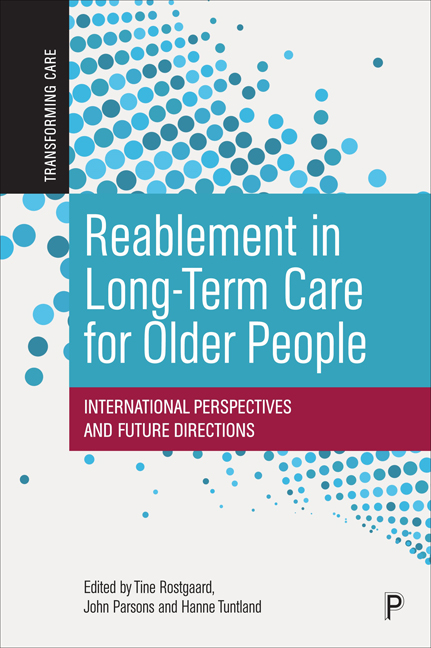5 - Does reablement improve client-level outcomes of participants? An investigation of the current evidence
Published online by Cambridge University Press: 18 January 2024
Summary
Introduction
With ageing populations, reablement is increasingly being seen by governments and service providers as a way of reducing or managing that demand. Some examples of how this has happened in different countries are provided in Chapter 3 by Feiring et al and in Chapter 4 by Parsons et al. The need to reduce or manage the demand for services in order to contain the costs to governments of supporting people as they age and require assistance to remain living in the community, has led many researchers to focus on care costs over time as the primary outcome of interest when examining reablement's effectiveness (Lewin et al, 2013; Lewin et al, 2014; Kjerstad and Tuntland, 2016). In addition to a common belief that ultimately it is the ability to control costs that is important to the government, a great advantage of this research is that the results of different studies are easily comparable. On the other hand, the client-level outcomes for program participants, that is, changes that are directly associated with the individual who is engaged in reablement, have often been treated as secondary outcomes only. Further, clientlevel outcomes have also, as described in Chapter 6 by Tuntland et al, been examined in so many different ways and using so many different patient-reported instruments and standardised tests, that summarising the evidence for reablement's effectiveness at an individual level is very hard. Nevertheless, the primary aim of the present chapter is to do just that – find and summarise the evidence on what individuals gain from participating in reablement as undoubtedly that is what motivates most service providers, their staff, and older people themselves. Its secondary aim is then to consider why the evidence is limited, and how the situation might be improved.
Method
In order to examine the effectiveness of reablement for its participants, it is necessary to first agree on the types of interventions that should be included in an overview of studies, given that as described in, among others, Chapter 2 by Tuntland et al, reablement as an intervention has been called different things in different countries and at different times.
- Type
- Chapter
- Information
- Reablement in Long-term Care for Older PeopleInternational Perspectives and Future Directions, pp. 93 - 117Publisher: Bristol University PressPrint publication year: 2023



